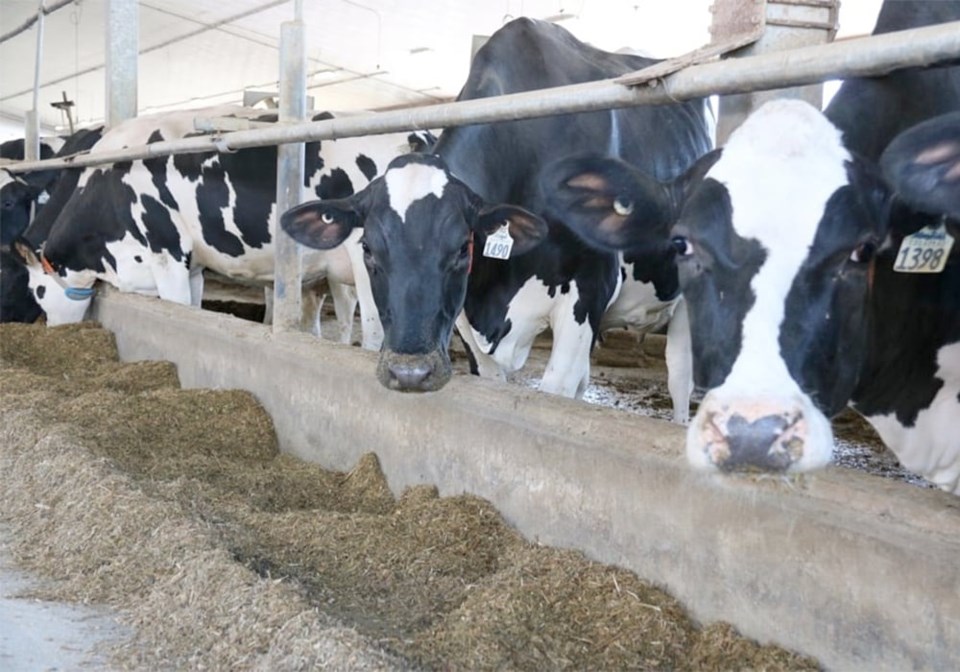WESTERN PRODUCER — Domestic birds that live in and around barns have been confirmed as the avian hosts of an outbreak on dairy farms in the United States of highly pathogenic avian influenza.
An April 16 update from the USDA’s Animal and Plant Health Inspection Service confirmed the avian host in this outbreak wasn’t migratory birds, as has been common with confirmed North American outbreaks on domestic poultry farms, but rather pigeons, grackles and blackbirds.
Biosecurity measures for dairy farms could change depending on the type of avian species that cause the infection.
Investigations are ongoing about the exact vectors taken by the virus that led to deaths in several barn cats, a mild infection in one Texas dairy employee, and either positive or presumed positive HPAI tests on dairy cows in 16 herds from six states.
This confirmation was no surprise to Dr. Jean-Pierre Vaillaincourt, an epidemiologist with University of Montreal’s Faculty of Veterinary Medicine. He says the influenza A virus doesn’t spread readily in feces so the chances are low that geese or ducks could infect dairy cows during a fly-over.
It also doesn’t spread easily through nasal droplets so the likelihood is low that cows would spread the virus to other cows.
However, Vaillaincourt said there is still lots to investigate and these methods of viral spread can’t be ruled out. The domestic avian hosts likely contaminated either feed or water with organic matter from an infected bird that has continual access to cattle housing and/or feeding areas.
It was reported that USDA officials had “floated the possibility, without naming specific herds or locations, that all affected cows may trace back to a single farm.”
Vaillaincourt believes this means positive tests in other states resulted from cattle imported onto those farms from Texas, a fact confirmed in some U.S. cases. He says it’s likely HPAI was circulating in dairy facilities in Texas and possibly nearby states for several weeks before someone decided to test for HPAI.
“(The infection in cows) is noticeable, but it’s not really a classic case of anything … (and) they seem to recover after two weeks. They may have, in several states, had a problem for quite some time and they didn’t know.”
In an open letter April 8, the American Association of Bovine Practitioners said HPAI in cattle should now be referred to as bovine influenza A virus (BIAV), to reflect that the disease is less lethal and presents with different symptoms in cattle than in poultry.
The person with the illness was almost certainly infected through cow’s milk, most likely splashing into their eyes or being introduced into their eyes by contaminated hands.
“Right now, the (U.S.-based) Centers for Disease Control in the U.S. is recommending people wear goggles” while dealing with infected cows, Vaillaincourt said. Feeding raw milk to either humans or calves is discouraged.
Cows don’t typically get milk in their eyes or noses and won’t knowingly eat a dead bird. But they could consume organic matter from a bird if it’s in feed or a water source.
“Water will be a big (subject of investigation),” he said. “In non-treated water, this virus could survive for weeks.”
Glacier FarmMedia contacted a scientist from the National Microbiology Laboratory quoted in a U.S. National Public Radio story, but they referred questions to the organization’s media department, and Health Canada said all inquiries should be directed to the Canadian Food Inspection Agency.
The CFIA sent this statement: “We are currently monitoring how this virus has been transmitted between different species and why it is affecting some mammals differently than others. The CFIA is working with the USDA, public health authorities, Canada’s veterinary community, industry and the provinces and territories to monitor the situation closely.
“Producers are encouraged to follow good biosecurity measures such as those outlined in the National Biosecurity Standards. Producers are also requested to monitor livestock for clinical signs, including a sudden decrease in milk production or feed consumption, and to contact their veterinarian for any suspected cases.”
Vaillaincourt said the highly pathogenic poultry disease appearing on a dairy farm and infecting one person, “doesn’t fit anywhere within what the government has in place to manage infectious diseases.”
Another topic of behind-closed-doors discussion, Vaillancourt said, is the lack of precedent for what to do if a mild infection, albeit one with significant possible wider-scale repercussions, turns up in cows in Canada.
A major dairy show is scheduled soon in Quebec and numerous bovine guests are expected to cross the border from the U.S., so “we don’t have a process right now that would require those cattle be tested for avian influenza.”
Without a process in place, should all U.S. visitors be turned back? Alternatively, if a testing process is put in place, what should happen if there’s a positive test for this mild and so-far short-lived infection? Do we quarantine cows?
“CFIA is not going to go and investigate these things. They don’t have the manpower. They already don’t have all the resources they need to cover poultry,” said Vaillancourt.
As a result, the agency said that if symptoms appear on dairy farms, farmers should contact a veterinarian to have samples tested. If positive for BIAV, it must be reported to the CFIA. The CFIA and Health Canada are watching for signs that the strain is zoonotic.
“If we had dead cows in the U.S., this would be a very different story,” said Vaillancourt.
That would lead agencies on both sides of the border to implement biosecurity measures aimed at preserving the health of the dairy herd. Officials in both countries remain on guard.
“It is one more species that can be infected, and the more the virus can cycle within different species, the more it has a chance to mutate.”

